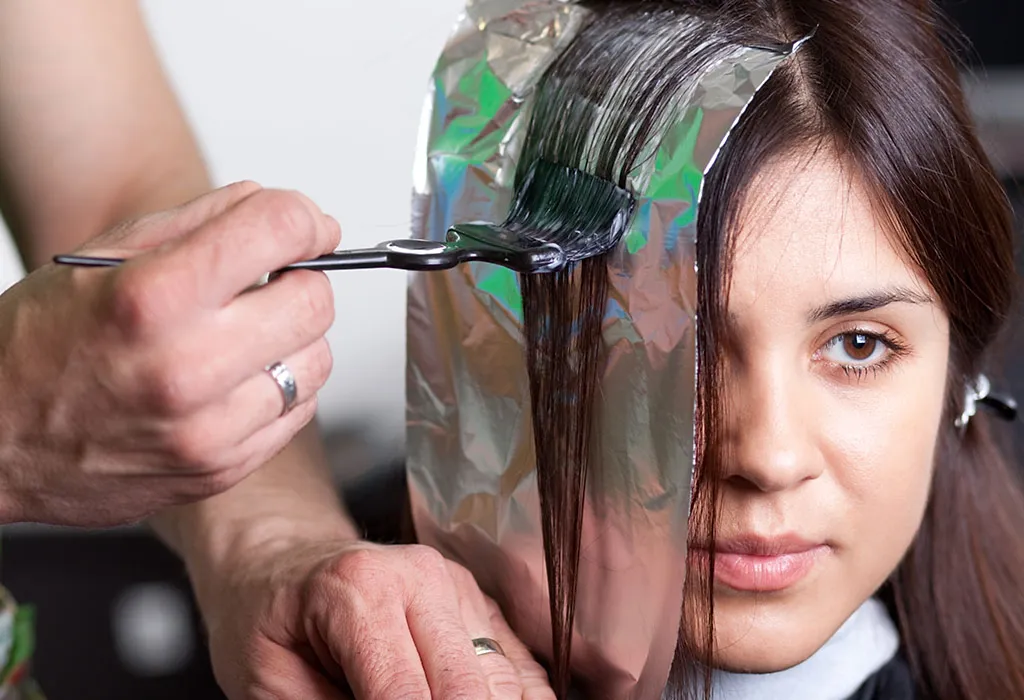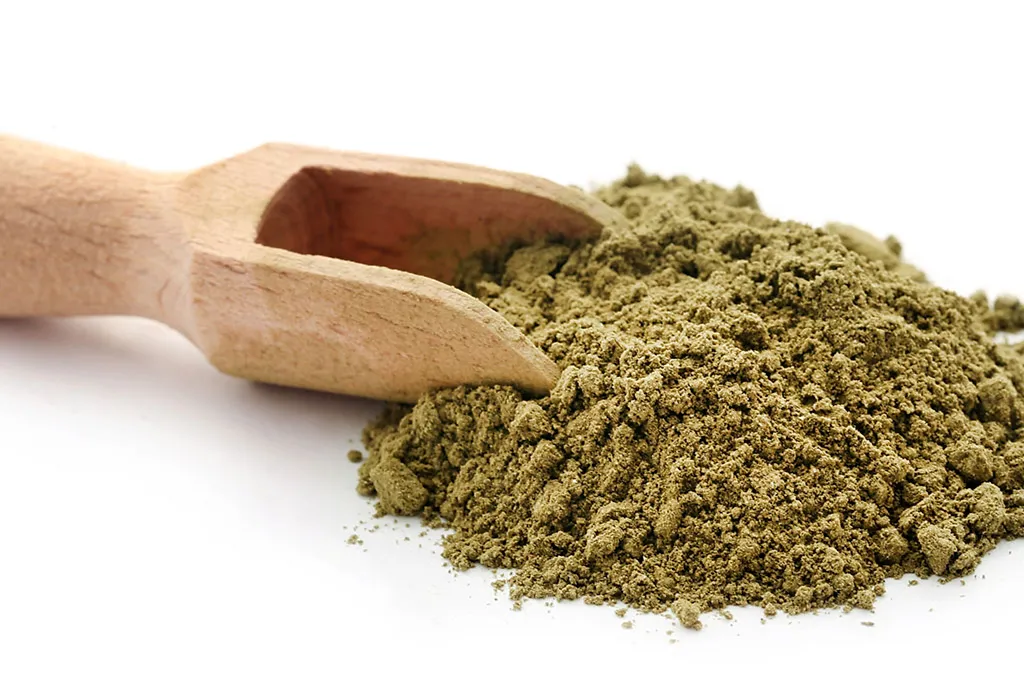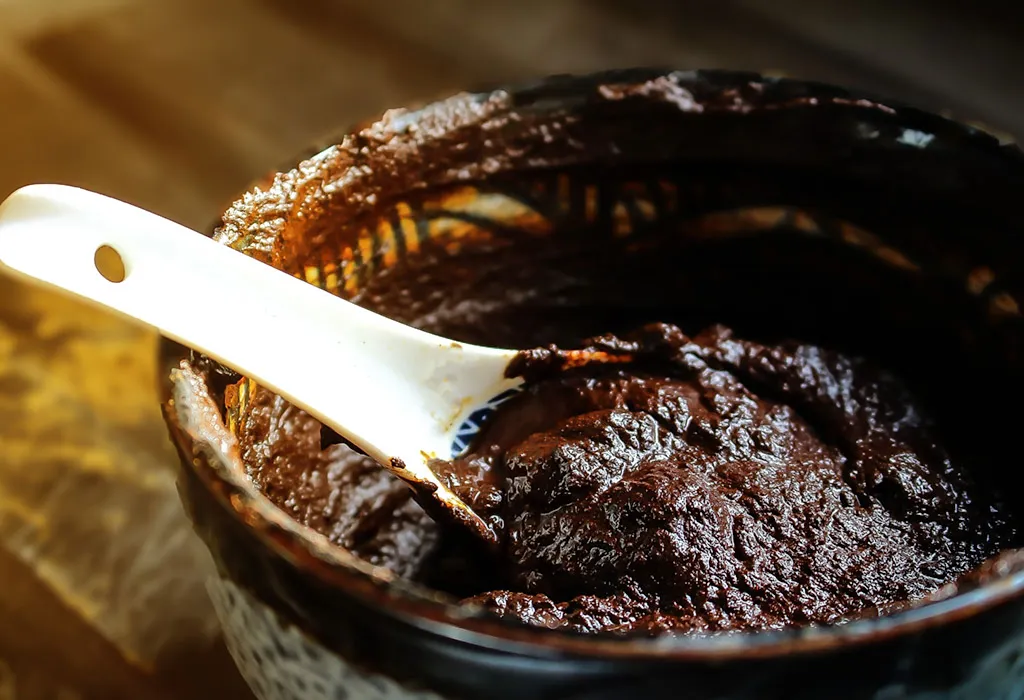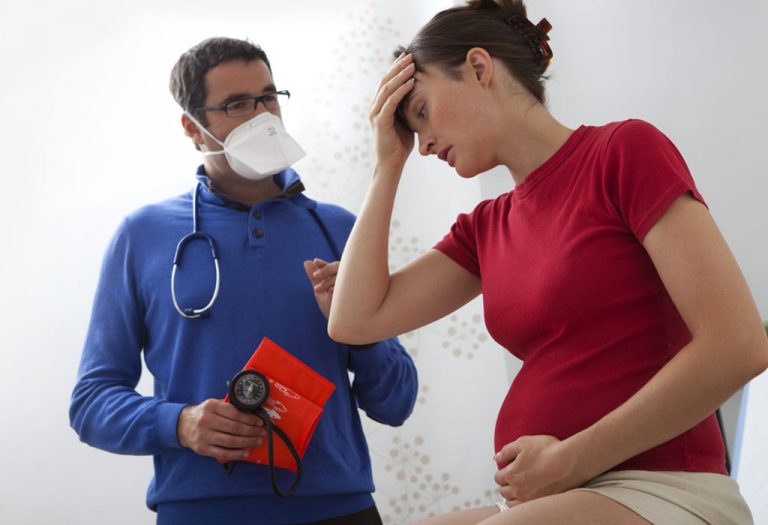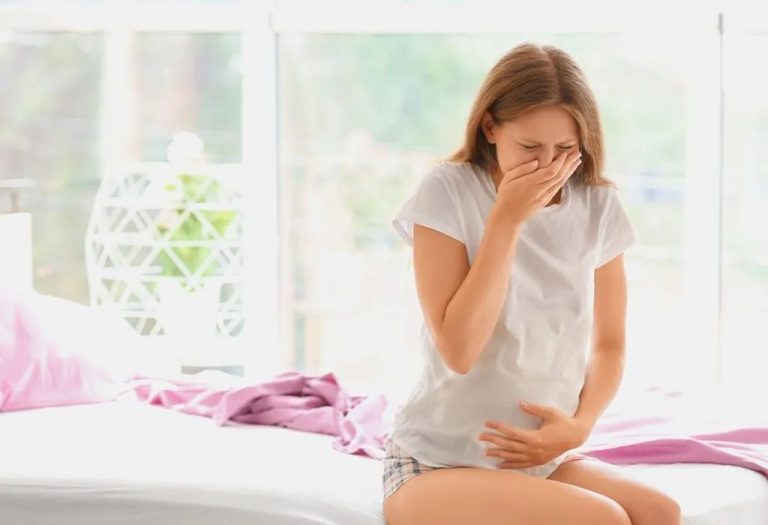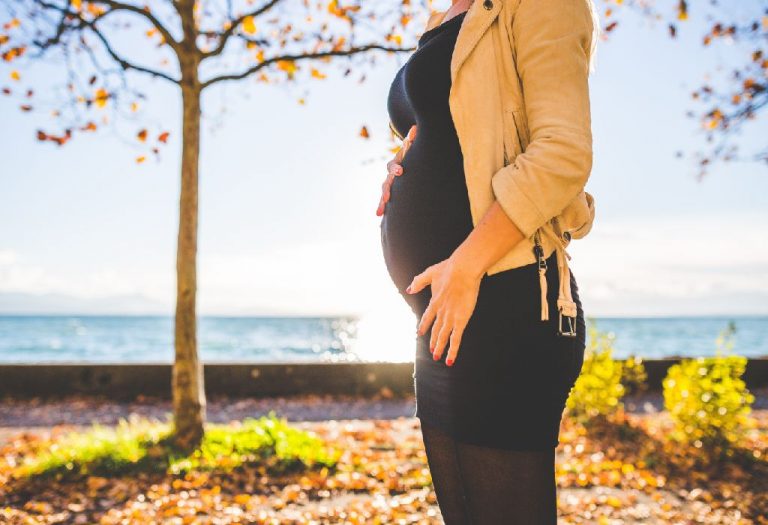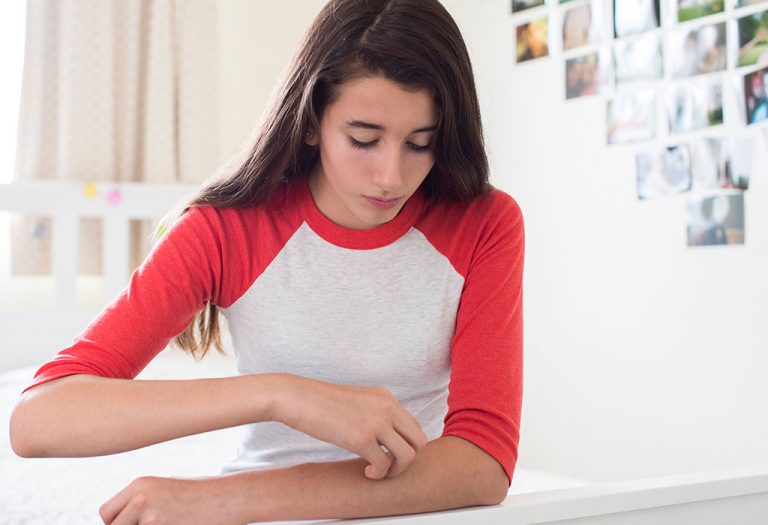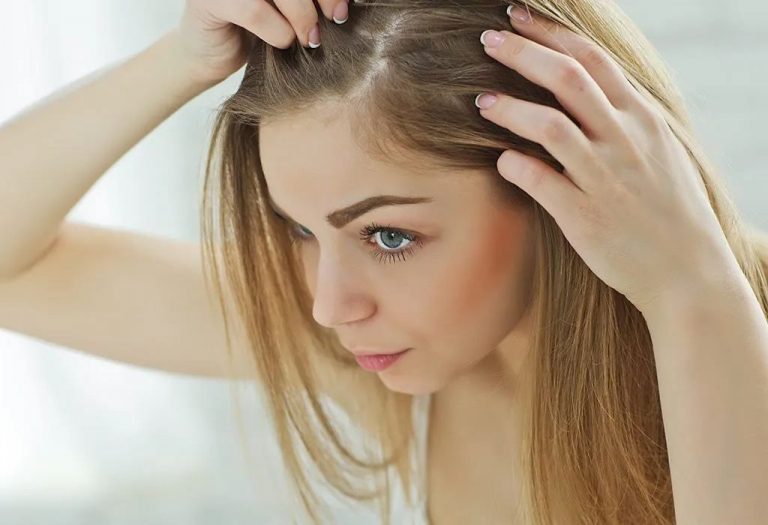Can You Dye or Colour Your Hair While Pregnant?
Find out if colouring your hair is safe during pregnancy, plus smart precautions and mom-friendly alternatives
Being pregnant doesn’t mean you can’t have beautiful hair. You just need to take extra caution when colouring or dyeing your hair during pregnancy. Many women worry about the safety of hair dyeing in pregnancy, but with the right precautions, you can maintain your hair’s vibrant look. If you want to colour your hair during pregnancy, you will want to be sure that it’s absolutely safe. So, read this article on hair dye and pregnancy to find out! We will provide tips on choosing the right products, timing your treatments, and ensuring your hair remains healthy and gorgeous throughout your pregnancy journey.
Is Dyeing or Colouring Your Hair Safe During Pregnancy?
Hair colouring during pregnancy is mostly safe if you take certain precautions and colour only parts of your hair. Most doctors feel that the risks of hair colouring are minimal for a pregnant woman and her unborn baby (1). However, they recommend that women stick to natural colours rather than using chemical hair dyes. This is because one can never predict the reaction to certain chemicals used in hair dye when the immune system is weak, which is the case during pregnancy (2).
Different Types of Hair Colour/Dye
When it comes to colouring your hair, there are various types of dyes, each offering different benefits and considerations, especially during pregnancy. Understanding these options can help you make a safer and more informed decision (3) (4).
1. Temporary Hair Colour
Temporary hair colour coats the surface of the hair and washes out after a few shampoos. This type is ideal for those looking for a short-term change without the commitment. It is generally considered safer during pregnancy because it contains fewer chemicals and doesn’t penetrate the hair shaft.
2. Semi-Permanent Hair Colour
Semi-permanent hair colour lasts longer than temporary dyes, typically fading after about 6-12 shampoos. It deposits colour without using ammonia or peroxide, making it a gentler option that is less likely to harm your hair and scalp. However, it’s still important to ensure the product is free from harsh chemicals.
3. Permanent Hair Colour
Permanent hair colour changes the natural pigment of your hair and requires a touch-up every few weeks as your roots grow out. This type often contains stronger chemicals like ammonia and peroxide, which help the colour penetrate deeply. Due to these chemicals, it is advisable to consult your healthcare provider before using permanent dyes during pregnancy.
4. Natural and Organic Dyes
Natural and organic dyes, such as henna or vegetable-based colours, are made from plant extracts and contain no synthetic chemicals. These dyes are considered the safest option during pregnancy as they are less likely to cause an adverse reaction. However, it’s still crucial to check the ingredients to avoid any potential allergens.
Right Time for Colouring/Dyeing Hair While Pregnant
When considering hair colouring or dyeing during pregnancy, it’s important to time it correctly to ensure both your safety and your baby’s. Each trimester presents different considerations for hair treatments.
1. In First Trimester
Most doctors recommend avoiding hair dye during the first trimester. This is because the baby’s organs are forming during this critical period, and exposure to chemicals, even in small amounts, could pose risks. It’s best to wait until the second trimester to reduce any potential harm to your developing baby (1).
2. In Second Trimester
The second trimester is generally considered the safest time to dye your hair during pregnancy (2). By this stage, your baby’s organs have developed, and they have more immunity to external agents, including hair colouring chemicals. Doctors often advise waiting until this trimester before using any hair dye and recommend considering natural or less harsh substitutes.
3. In Third Trimester
While it is still safe to dye your hair during the third trimester, it’s important to ensure good ventilation to avoid inhaling any fumes. The baby is continuing to grow and develop, so taking precautions such as using natural dyes and ensuring minimal exposure to chemicals remains important. Always consult your healthcare provider before proceeding with hair dye treatments during this time.
Other Substitutes for Hair Colouring/Dyeing
If you are intent on colouring your hair but are afraid that chemical dyes will do your baby or you harm or are unsure of what kind of natural dye to use, consult your doctor about the options available to you. Here are a few substitute hair dyes for pregnant women.
1. Vegetable Hair Dye
Organic vegetable hair dye is an excellent natural substitute for the chemical ones. This type of dye doesn’t contain chemical fumes, and reduce the risk of nausea during the colouring process and is also considered a healthy form of hair colour for hair since it doesn’t weaken the roots of the hair.
2. Henna
Henna is a natural plant-based dye used for centuries to colour hair. It provides a rich, reddish-brown hue and can be mixed with other natural ingredients to achieve different shades. Henna is a safe and effective alternative, as it conditions the hair while colouring and does not contain harmful chemicals.
3. Herbal Rinses
Herbal rinses use infusions of herbs like chamomile, sage, or rosemary to subtly change hair colour or enhance natural highlights. For example, chamomile can brighten blonde hair, while sage can darken grey strands. These rinses are gentle on the hair and scalp, making them a safe option during pregnancy.
4. Coffee or Tea Rinses
Using brewed coffee or tea as a rinse can temporarily darken hair or enhance its natural colour. Coffee can add depth to dark hair, while black tea can provide similar benefits. These natural rinses are free from chemicals and can be a gentle way to experiment with hair colour without the risks associated with traditional dyes.
Risk of Hair Colouring or Hair Dyeing in Pregnancy
Many experts say that hair colouring in pregnancy is usually safe (5), but it’s still good to know the possible risks. Here are a few side effects of dying hair while pregnant:
- Small amounts of chemicals may be absorbed through the scalp (3) (4).
- Stronger allergic reactions can happen because your skin is more sensitive (6).
- Inhalation of strong fumes from the dye may cause headaches, nausea, or dizziness.
- Scalp irritation can occur more easily during pregnancy.
Natural Ways of Hair Colouring/Dyeing During Pregnancy
If vegetable dyes don’t appeal to you, don’t worry; there are other options that you can consider.
1. Henna
Henna is a traditional form of colouring the hair in the Indian subcontinent. It is entirely natural and does not use vegetables or chemicals. This type of dye is considered the safest to colour hair. The henna leaves have drawbacks, however, as the range of colour available is extremely limited. This is recommended if you are only trying to hide those pesky grey hairs or just want a different shade of colour. Using henna (mehndi) leaves are recommended over the powder to ensure the elimination of potential chemicals used to preserve the powder. To use henna leaves follow the steps mentioned below:
- Using a pan, soak the leaves overnight.
- If you are looking to make the colour nutritious for your hair, you can tea leaves or egg whites to the mixture.
- When day breaks, using a food processor grind the mixture into a paste.
- Using a brush, lightly stroke the regions you want to colour with the paste, ensure you apply it evenly
- Let it dry for some time.
- Wash your hair with a mild shampoo if you have egg whites in the mixture.
- Avoid shampoo and rinse your hair if there are no egg whites in the mixture.
Use of Mild Colours
If you decide to go for alternate options like the milder dyes available in the market, remember to use ammonia-free colours, as ammonia can be extremely bad for your hair and skin. Using semi-permanent mild dyes can also eliminate some toxins.
How to Make Coloured/Dyed Hair Last Longer When Pregnant?
Maintaining your coloured or dyed hair during pregnancy can be challenging, but with the right care, you can prolong the vibrancy of your hair colour. Here are some effective tips to help your hair colour last longer.
- Use Sulfate-Free Shampoo and Conditioner: Sulfate-free products are gentler on coloured hair and help preserve the colour for a longer time. Sulfates can strip the hair of its natural oils and colour, so opting for sulfate-free formulas will keep your hair healthier and your colour more vibrant.
- Avoid Frequent Washing: Washing your hair less frequently helps maintain the colour. Aim to wash your hair two to three times a week to prevent the colour from fading quickly. When you do wash, use lukewarm water instead of hot, as hot water can cause the colour to wash out faster.
- Use Heat Protectant Products: If you use heat styling tools like blow dryers, curling irons, or straighteners, always apply a heat protectant spray or serum. Heat can damage coloured hair and cause the colour to fade more quickly, so protecting your hair from high temperatures is crucial.
- Deep Condition Regularly: Regular deep conditioning treatments help keep your hair moisturized and healthy, which can extend the life of your colour. Look for deep conditioners specifically formulated for coloured hair to provide extra nourishment and protection against colour fading.
Precautions to Take While Colouring/Dyeing Hair in Pregnancy
When it comes to the safety of hair dye in pregnancy, there are a few precautions you should keep in mind. While the risks are generally low, it’s still important to be careful. Here are a few precautions you should take (2) (7):
- Use hair dyes less frequently.
- When faced with a choice, opt for natural dyes.
- Follow the package instructions while applying the dye.
- Consult your doctor before using the dye and in case of any side effects.
- Use mild shampoos.
- Only dye your hair after the first trimester has ended.
- Buy trusted brands of hair colour, as the cheaper ones may harm your hair and affect your health as well as your baby’s health.
- Ensure you don’t consume any food or beverage while colouring your hair to avoid accidental ingestion of chemicals.
- Avoid using hair colour near your eyes, remember, the risk of infection could also harm your baby.
- Use good quality conditioners to maintain healthy hair.
- Don’t use dyes that require you to bleach your hair, as this may harm the baby.
- Always apply small quantities first to see how your body reacts to the dye before applying it thoroughly (1).
When to Consult a Doctor?
Most hair dyes have minimal side effects. If you wish to colour your hair, you must check with a doctor first because your doctor can help you identify what hair dye would be safe to use during pregnancy. Certain natural dyes can cause allergic reactions to the skin. Chemical dyes may do the same. Another reason to consult a doctor is to find out when during your pregnancy is it safest to colour your hair.
The Lowdown
When getting hair coloured/dyed during pregnancy, it is important to remember that hair dye can cause harm if you use too much of it. Keep in mind that your body might be allergic to certain dyes. Consult your doctor before using hair dyes. It is essential to understand what you are allergic to and what your hair dye contains. Before using the dye on your entire head, use a small amount in one spot and leave it for a while. See if your body reacts well to the dye. If not, it is advisable to change the type of dye. Try streaking or frosting your tips instead of colouring the entire hair, as highlights are also a safer option.
FAQs
1. Can lemon juice be used to lighten hair during pregnancy?
Lemon juice is a natural lightening agent that can be used to achieve subtle highlights. To use, apply freshly squeezed lemon juice to your hair and expose it to sunlight for about an hour. This method is generally safe during pregnancy, but ensure you rinse thoroughly and condition your hair afterwards to prevent dryness.
2. Is beet juice a safe alternative for adding red tones to hair?
Yes, beet juice can add a reddish tint to your hair and is considered safe for use during pregnancy. Mix beet juice with a carrier like coconut oil and apply it to your hair. Leave it on for at least an hour before rinsing out. This natural dye method is free from harmful chemicals and can enhance your hair’s red tones safely.
This was all about colouring/dyeing your hair when pregnant. Remember that if you face any side effects, you must consult your doctor immediately. Remember not to colour any other hair apart from the hair on your head, especially the hair near the eyes. If the colour slips into your eye, it could cause infections. In case of an infection, your baby will be more at risk as they have an underdeveloped immune system that may not be able to combat the infection naturally.
Also Read:
Greasy Hair in Pregnancy
Can You Get a Facial while Pregnant?
Getting a Haircut during Pregnancy
Using Hair Removal Cream while Pregnant
Is It Safe To Get a Hair Rebonding or Perming when Pregnant
Was This Article Helpful?
Parenting is a huge responsibility, for you as a caregiver, but also for us as a parenting content platform. We understand that and take our responsibility of creating credible content seriously. FirstCry Parenting articles are written and published only after extensive research using factually sound references to deliver quality content that is accurate, validated by experts, and completely reliable. To understand how we go about creating content that is credible, read our editorial policy here.
1. NHS – Using hair dye in pregnancy: is it safe?
2. Cleveland Clinic – Is It Safe To Dye Your Hair While You’re Pregnant?
3. American College of Obstetricians and Gynecologists – Is it safe to dye my hair during pregnancy?
4. PubMed Central – Safety of hair products during pregnancy
5. Nemours KidsHealth – Using Hair Dyes and Color During Pregnancy
6. U.S. Food & Drug Administration – Hair Dyes
7. U.S. Food & Drug Administration – Cosmetics Safety Q&A: Hair Dyes






